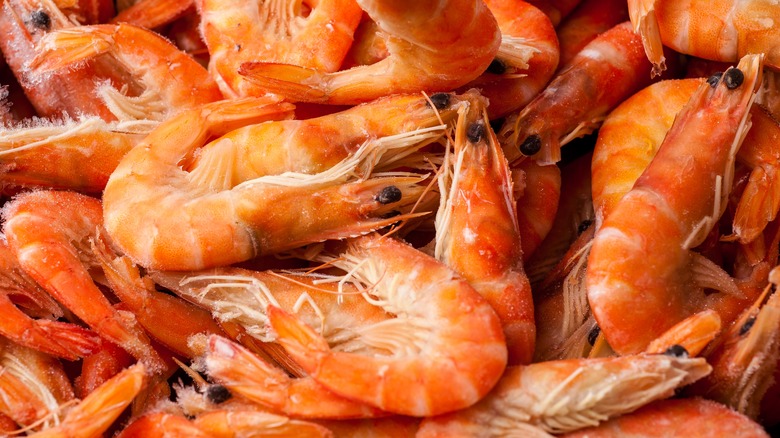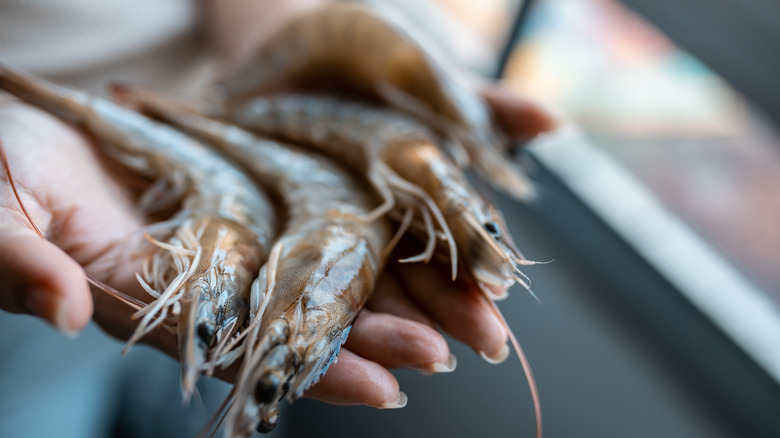The Country Where Most Of Your Shrimp Comes From (If You Live In The US)
If you're like many Americans, the most frequent seafood that ends up on your plate is the humble yet delicious shrimp. But how much do you know about where your shrimp actually comes from?
The first step to understanding the origin of your shrimp is to understand precisely how it ended up there – either caught wild or farmed in an aquaculture facility. According to the World Wildlife Fund, just over half (55%, to be exact) of all shrimp provided as food globally is farmed. China is the world's biggest shrimp-farming nation, followed by other Southeast Asian countries like Thailand, Indonesia, India, and Vietnam. Brazil and Ecuador come out on top of the Western Hemisphere for farmed shrimp production.
Hawaii and Florida are home to a good deal of the relatively small U.S. shrimp farming industry, though the limited habitat requirements allow production in more unusual places like Kentucky, as well. Of the remaining amount, the vast majority are caught in Indian and Pacific Ocean waters close to Southeast Asia. The United States imports around 90% of its shrimp, mainly coming from Central America and Southeast Asia.
America's jumbo appetite for shrimp
It's safe to assume most of your shrimp comes from the Southeast Asian nations mentioned above unless you specifically seek out domestic varieties. They can be found frozen at most grocery stores or fresh for those lucky enough to live near the Gulf of Mexico. According to NOAA, three-quarters of wild-caught American shrimp are pulled from the warm waters of the Gulf.
Regardless of the origin, it seems like we can't get enough shrimp. Recent data provided to SeafoodNews.com shows Americans eat, on average, five pounds of the crustacean per year, about double the closest seafood competition. This growing demand has led to similar expansions of shrimp farming, with sometimes unpleasant results.
Some have raised concerns about harmful environmental practices common in the seafood industry, particularly in developing countries with poor regulation or enforcement. These include releasing large amounts of organic waste, antibiotics, or chemicals into surrounding waterways, seriously impacting ecosystems. However, with a bit of education and diligence, it's easier than ever to find responsibly produced shrimp. Consumer Reports offers a guide to the various certifications available, as well as the terms buyers can safely ignore, like "natural," "organic," or "sustainable." It's also typically best to buy your shrimp frozen for maximum freshness. Keep these frozen shrimp tricks in mind.

